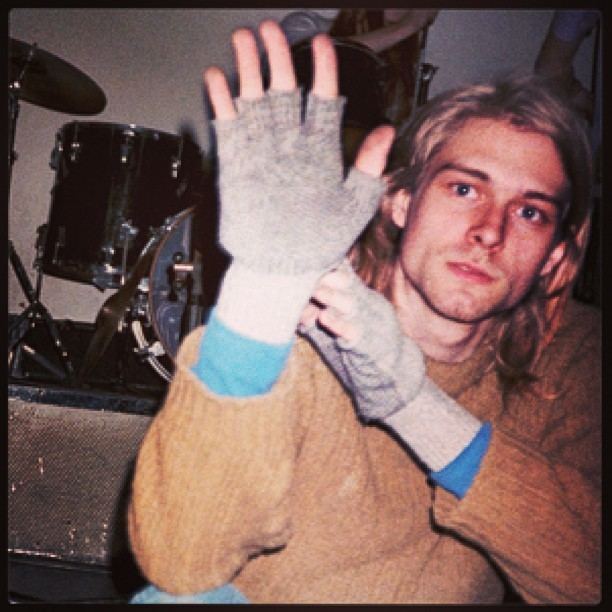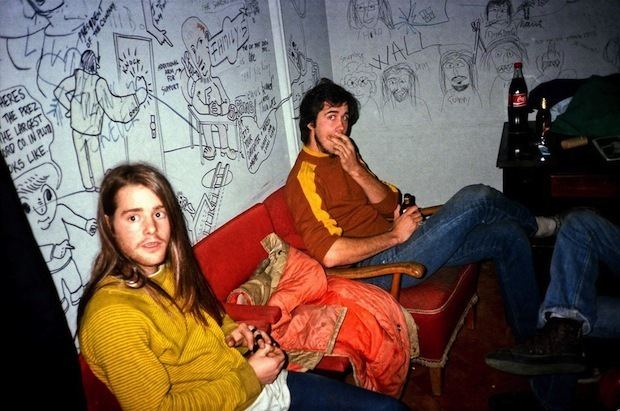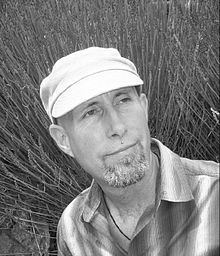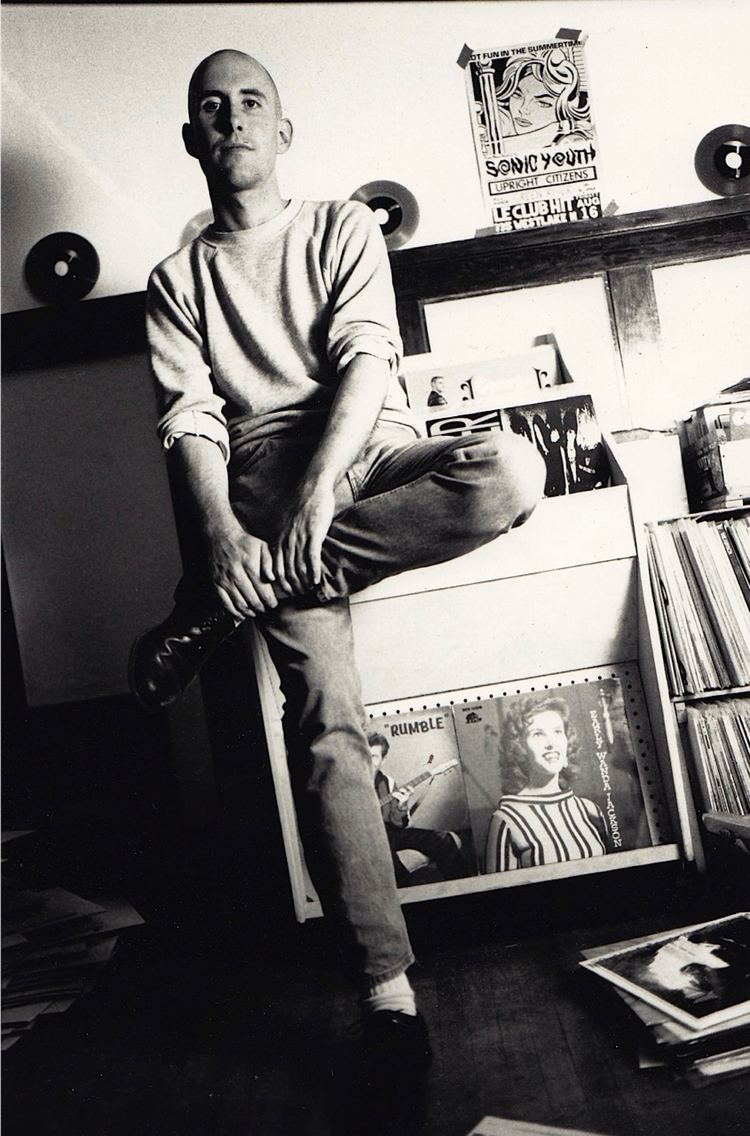Genres Indie Website www.brucepavitt.com Movies Singles | Years active 1980–1996 Role DJ Occupation(s) Founder Name Bruce Pavitt | |
 | ||
Born March 7, 1959 (age 66) ( 1959-03-07 ) Books Experiencing Nirvana: Grunge in Europe, 1989, Sub Pop USA: The Subterraneanan Pop Music Anthology, 1980-1988 Parents Ruth Pavitt, Robert Pavitt Education Rich East High School, The Evergreen State College Similar People Mark Arm, Kim Thayil, Hiro Yamamoto, Jack Endino, Calvin Johnson | ||
Bruce pavitt talks nirvana grunge sup pop s early days pt 1
Bruce S. Pavitt (born March 7, 1959) is an American music historian, critic, DJ, speaker, author, founder of Sub Pop, and co-founder and current Creative Director of 8Stem.
Contents
- Bruce pavitt talks nirvana grunge sup pop s early days pt 1
- Bruce pavitt and jon poneman of sub pop legal issues
- Early life
- School
- Sub Pop
- Post Sub Pop
- 8Stem
- Executive producer credits
- Prominent Sub Pop artists
- Film
- Books
- References

He is most famous for helping cultivate the Grunge music phenomenon in the early 1990s. Pavitt not only released the first albums by Soundgarden, Mudhoney, and Nirvana, but equally important, built a compelling narrative of the Seattle Music Scene in the international press that captured the world’s imagination.

Bruce pavitt and jon poneman of sub pop legal issues
Early life

Pavitt was born in Chicago, and grew up in suburban Park Forest, Illinois, the second of six kids to Robert and Ruth Pavitt. He became interested in music at a young age (Motown in neighboring Detroit was a huge influence) and showed early signs of being a music entrepreneur. At age 9, he sold Christmas cards door-to-door in the summer heat to earn money for a record player. Soon after, he bought his first record, The Beatles, "Revolution". Seeing an opportunity, Pavitt continued to work odd jobs and used his earnings to buy records that he would later re-sell at school.

His interest in music deepened in 1977 when he discovered Devo, then an obscure punk band from the industrial city of Akron, Ohio. Around this time, he also picked up a local fanzine called CLE, which featured an index of bands from all over Ohio. This epiphany lead to a lifetime pursuit of independently produced bands, artists, and localized culture.

“A lightbulb went off in my head; small towns and cities were capable of creating great art, great music. From the summer of 1977 onward, I started to hunt for regional independent records.”

Pavitt spent time at Wax Trax! Records in Chicago and read the Village Voice at the local library, where he would note the bands playing at CBGB. He also made a fateful friendship during this time: Kim Thayil (Soundgarden) was a neighbor, and later played in a band, Identity Crisis, with Pavitt’s youngest brother, John.
School
Pavitt attended Blackburn College in Illinois. During this time, his Mom, familiar with Pavitt’s indie music obsession, introduced him to Carl Schneider, a local school teacher who ran Cowboy Carl Records. Carl told Pavitt about a community radio station called KAOS (FM) in Olympia, Washington, home of The Evergreen State College. Managed by John Foster, KAOS was the only station in the country at that time to prioritize independently released music. Foster also published OP, a magazine that focused on independent music.
In the fall of 1979, Pavitt moved West to finish college at Evergreen and connect with Foster. Conveniently, Pavitt arrived just as DJ Calvin Johnson (Beat Happening) was moving to Washington DC. Pavitt immediately took over Johnson’s “rock” time slot and named his show, Subterranean Pop.
In 1980, Pavitt produced a ‘zine of the same name, the first to focus on independently released American rock records, region by region. The name was shortened to Sub Pop with issue #3 in 1981. He later released three cassette compilations through the fanzine that included artists like, Jad Fair, The Boneman of Barumba, and The Oil Tasters, and featured cover art by Charles Burns.
From Subterranean Pop #1: “Tomorrow’s pop is being realized today on small decentralized record labels.”
Pavitt gained distribution of his fanzine through a bold gamble. He packaged all 500 copies of Subterranean Pop #1 and sent them to Systematic, at the time, one of three independent record distributors in the US. He decorated the box with catchy graphics, so it looked like an art piece. It got noticed by manager Joe Carducci, who proceeded to sell out the entire first issue, and sent Pavitt a check.
Pavitt likes to joke that he “majored in punk rock.” But as a student at alternative Evergreen, he actually did get school credit for his work at KAOS and with Subterranean Pop. He graduated from Evergreen in 1981 with a Bachelor of Arts degree.
Sub Pop
In 1983, Pavitt moved to Seattle. After working a restaurant job, Pavitt started Bombshelter, a store that sold both independently released records and skateboards, with Russ Battaglia. Early customers included Duff McKagan, Mark Arm, and Charles Peterson. Located in the Capitol Hill neighborhood, the store later changed its name to Fallout Records and Skateboards, and became a community hub for the punk and alternative scene in Seattle. Pavitt left Fallout in 1985.
Pavitt also began writing a Sub Pop column in The Rocket, a monthly local arts and music paper. Continuing the theme from his fanzine, he reviewed independent music from around the country. The complete collection of these columns, as well as the 'zines, is available in Sub Pop USA, The Subterranean Pop Music Anthology, 1980 - 1988 published by Bazillion Points in 2014.
Also at this time, Pavitt hosted a Sub Pop radio show on the local college radio station, KCMU (now KEXP) and DJed at two local clubs, The Vogue and the all-ages venue, The Metropolis. In 1983, Pavitt was possibly the only DJ in the country spinning a set of Run DMC, Minor Threat, and The Smiths.
By 1986, Pavitt was working for Muzak, a background music distribution service for retail stores and other establishments. Also this year, Pavitt formally set up his Sub Pop record label. His first release was Sub Pop 100, a compilation featuring Sonic Youth, Naked Raygun, Skinny Puppy, Scratch Acid, Steve Albini, The U-Men, and other bands he was documenting with his columns and radio shows. Pavitt kept boxes of records under his desk at Muzak, and shipped them out on the sly, from the warehouse.
Pavitt made several key marketing moves in turning Sub Pop and the city of Seattle into a global brand. One of the first was to feature Charles Peterson’s dynamic B&W photos of the bands playing live. In many photos, the audience was prominently framed, suggesting they were equal participants in the show. This conveyed a message that anyone could move to Seattle and become part of the scene.
In 1987, Pavitt released Green River’s Dry as a Bone and Soundgarden’s Screaming Life EPs. In 1988, encouraged by Kim Thayil, Pavitt partnered with Jonathan Poneman, a local music promoter. Poneman invested $20,000 in the label, and on April Fool’s Day, the two opened a small office in The Terminal Sales building in downtown Seattle. Their first release together was Green River’s Rehab Doll, a band that had broken up several months prior. The compilation Sub Pop 200 soon followed, a boxed set of three EPs that featured 20 tracks by such Northwest bands as Tad, Nirvana, Soundgarden, Green River, Beat Happening and The Screaming Trees.
Together with Poneman, Pavitt included a glossy, multi-page insert with Sub Pop 200. It featured not only Charles Peterson’s band photos, but also a picture of Sub Pop’s “Corporate World Headquarters” - a full shot of the historic brick and terra cotta Terminal Sales Building. This image put the Sub Pop office on the map, and it soon became a tourist destination for vacationing independent music fans from across the world.
With Mudhoney, Tad, and Nirvana gaining traction in the local press, Pavitt and Poneman organized a concert of all three bands at the Moore Theatre in Seattle. Dubbed Lamefest, it would be the biggest stage any of the bands had played on to date. Despite being completely broke, they flew in Everett True, a journalist from the influential British music magazine Melody Maker, and treated him to a weekend of partying with Sub Pop musicians. On April 9, 1989, Lamefest sold out, the bands played to a raging mosh pit, and True went home to write a hyperbolic piece about the Seattle Music Scene.
The fawning of the British press dramatically increased the profile of Sub Pop and the Seattle Sound around the world. John Peel, the influential BBC DJ, wrote “Sub Pop has the most distinctive regional sound since Tamala / Motown” in the London Observer. The next year, all three bands toured Europe, culminating in Lamefest UK, on December 3, 1989. Pavitt recounts the tour in a book entitled Experiencing Nirvana, Grunge In Europe, 1989 published by Bazillion Points in 2013.
In 1990, with the buzz on Sub Pop and Seattle on a low boil, but the company’s finances in a continued state of red, Pavitt and Poneman sold Nirvana’s contract to Geffen imprint, DGC. Soon after, Nirvana rocketed to stardom with the release of Nevermind in September, 1991.
Pavitt’s quote in Subterranean Pop #1 was finally realized as Nirvana overtook Michael Jackson for the number one spot on the Billboard charts. In the deal with DGC, Sub Pop’s logo was printed on every album, and the label received royalties for each copy sold. Pavitt was soon deluged with interview requests from the international press as Seattle became ground zero for Grunge and Alternative Rock.
Riding the wave of Grunge, Pavitt and Poneman sold 49% of Sub Pop to Warner Brothers for a reported $20 million in early 1995. Never ones to lose their sense of humor, during a period in which the Seattle Music scene was thoroughly fried by major labels, money, and the national spotlight, Sub Pop printed the slogan, “We sold out first!”
In 1996, Pavitt left his day job with Sub Pop. Contributing factors in his decision are reported to be disagreements with Poneman on the direction of the label's future, and the change in business culture following the sale to a major label. Pavitt eventually sold his remaining shares of Sub Pop to Poneman.
As founder of Sub Pop, Pavitt is regarded as a cultural visionary and Seattle business icon. His bronze footprints are on the Walk of Fame sidewalk at 6th and Pine in Seattle, alongside Jimi Hendrix and Bill Gates. In 2013, Seattle recognized the 25th year anniversary of Sub Pop with a celebration atop the Space Needle, including a live concert by Mudhoney. In 2015, Pavitt was named one of the “35 Most Influential Business Leaders of the Last 35 Years” by The Puget Sound Business Journal. Honoring the historical impact the label has had on Seattle, The Seattle International Airport hosts a boutique Sub Pop store for tourists in its shopping concourse.
Today, Pavitt is included in many collections of music history. He most recently appeared in Cowboys and Indies, a music history book by Gareth Murphy, published in 2014, and Sonic Highways, a 2014 American music HBO documentary produced by Dave Grohl.
Post Sub Pop
In 1997 Pavitt moved to Orcas Island with his then wife, Hannah Parker, and raised two children, Iris and Cedar. The years following, Pavitt became increasingly interested in the participatory culture of the West Coast festival scene, spending time at Burning Man, Symbiosis, and Beloved among others.
Pavitt maintained his roots in the Capitol Hill, Seattle neighborhood by investing in Linda’s Tavern, The Aro.Space nightclub (now Neumo’s), and other establishments. The Western-themed Linda’s has since become a neighborhood institution, noted for its eclectic jukebox, originally stocked with Pavitt’s personal 7” record collection, including releases by Johnny Cash, Nirvana, Al Green and Black Flag.
Pavitt remains active in the music business by consulting with artists and music labels, speaking at music conferences, and performing as a DJ. He has also written two books, Experiencing Nirvana, Grunge In Europe, 1989 and Sub Pop USA, The Subterranean Pop Music Anthology, 1980 - 1988, based on his early days with the fanzine and label.
8Stem
Currently, Bruce Pavitt is Co-founder and Creative Director of 8Stem, an interactive music format, remix app, and social media platform.
The roots of 8Stem began in In 2005, when Pavitt connected with musician and producer, Adam Farish, on Orcas island. The two met at a fundraiser for Children’s House, a local pre-school, and bonded over a mutual interest in Terrance McKenna, Electronic Dance Music, and the West Coast festival scene. As music professionals and fans, they kept up an ongoing dialog about the future of the industry, which they both agreed would be decentralized, interactive, and participatory.
By 2014, technology caught up with their vision, and Farish designed an interactive digital music format and app to remix music on mobile devices. The two officially partnered up, and called the new company 8Stem, after the 8 stem files that comprise the new audio format. 8Stem was formally incorporated in August 2015, and leased an office on Capitol Hill's Pike / Pine corridor later that year.
After months of further development and beta testing, 8Stem launched in the App Store in October 2016. Stories in the The Seattle Times, Billboard Magazine, Tech Crunch, and Business Insider soon followed.
Borrowing his Sub Pop formula, Pavitt has leveraged the Seattle community to hype 8Stem and attract a global spotlight. He has aligned 8Stem with the local music scene and has repeatedly referenced Seattle’s tech reputation in the press.
Some of his Seattle acts include Soundgarden’s Kim Thayil, Telekinesis, Manatee Commune, Porter Ray, Motopony, KJ Sawka, Pickwick, Kung Foo Grip, and Justin Hartinger. At last count, there were over 50 artists included on the 8Stem roster.
In another effort to promote his Seattle connection, Pavitt partnered with local radio station KEXP in November 2016 to host a remix contest. 8Stem featured tracks by Telekinesis and Fly Moon Royalty from the KEXP Live In-Studio recordings. The winning remixes were played on-air and remain in the KEXP library.
